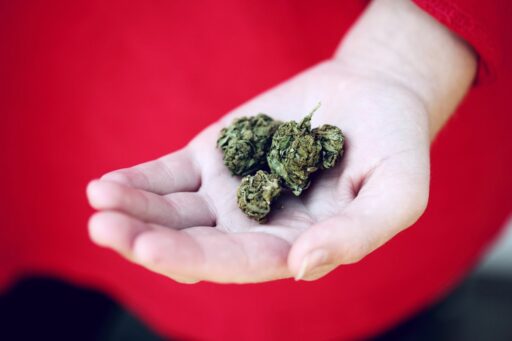The landscape of medical marijuana in the United States is a complex patchwork of laws and regulations. With various states having different rules about the legality, prescription, and use of medical marijuana, navigating this ‘green map’ can be daunting. This article provides a comprehensive guide to understanding the medical marijuana states in the U.S., the legal restrictions, clinical issues, patient rights, and much more. Whether you’re a patient, healthcare provider, or simply curious about the topic, this article aims to shed light on the critical aspects of medical marijuana in the U.S.
Key Takeaways
- The legal landscape for medical marijuana in the U.S. varies widely across states, with some allowing medical and recreational use while others strictly prohibit it.
- Healthcare professionals in medical marijuana states may recommend cannabis for certain conditions, but must navigate a complex array of regulations and restrictions.
- Patients have rights and there are various schemes such as Patient Access Schemes and T21 (Project Twenty21) that aim to support those using medical cannabis.
- Dispensary Green is a leading pharmacy in the UK for medical cannabis, reflecting the global nature of medical marijuana distribution and availability.
- Clinical considerations for medical marijuana include best practices for dosing, storage, and usage, with specific attention to the intricacies of different cannabis cultivars and consumption methods.
1. Medical Marijuana States

As of the latest updates, a significant number of states in the U.S. have recognized the therapeutic potential of cannabis and have enacted laws to allow for its medical use. Healthcare professionals in these states may recommend medical marijuana for a variety of qualifying conditions, adhering to regulations that govern dosage, medical supervision, and specific medical conditions.
- Alaska
- Arizona
- California
- Colorado
- Connecticut
- … (list continues with all medical marijuana states)
While the legal landscape is complex and varies across jurisdictions, the trend towards recognizing marijuana’s therapeutic benefits is clear. Patients in medical marijuana states have access to alternative treatments under professional medical supervision, although they must navigate the patchwork of laws and regulations.
It is important to note that despite the growing acceptance, regulatory constraints and legal implications can limit access to marijuana-based treatments in certain areas. Patients and healthcare providers must stay informed about the latest legal developments to ensure compliance and optimal care.
2. Legal Restrictions

The legal landscape for medical marijuana in the U.S. is a complex patchwork of state-specific regulations. While some states have embraced the therapeutic use of marijuana, others maintain stringent prohibitions, creating a challenging environment for patients and healthcare providers alike.
In states with legalized medical marijuana, patients must navigate a series of regulatory hurdles to access treatment. These often include obtaining a recommendation from a qualified healthcare provider, registering with the state’s medical marijuana program, and adhering to possession and consumption guidelines.
Legal restrictions may limit options for exploring alternative therapies and create barriers to research and clinical trials.
Conversely, in regions where marijuana remains illegal or tightly regulated, patients may face significant challenges and legal repercussions for seeking cannabis-based treatments. It is essential for individuals to understand the legal implications and potential risks involved in pursuing medical marijuana as a form of therapy.
3. Clinical Issues

The integration of medical marijuana into clinical practice is fraught with challenges. Clinicians often hesitate to prescribe marijuana due to a scarcity of clinical trials and a general lack of awareness about its potential benefits and applications. This hesitation is compounded by the complex legal landscape surrounding medical cannabis.
- Regulatory constraints and legal implications may limit access to marijuana-based treatments.
- Healthcare providers must balance the potential benefits against concerns about dependency and adverse effects.
- Navigating these issues requires collaboration between healthcare providers, policymakers, and communities.
The goal is to ensure equitable access to treatments while addressing the legal and social considerations of medical marijuana use.
4. Transferring Clinics

When a patient decides to transfer between medical cannabis clinics, it’s essential to understand the process and requirements. Transferring clinics can be a nuanced procedure, and patients need to be well-informed to ensure a smooth transition.
- Ensure you have a copy of your medical records from your current clinic.
- Contact the new clinic to understand their transfer policies.
- Complete any required paperwork and consent forms for the transfer.
- Schedule an initial consultation with the new clinic to discuss your medical history and treatment plan.
Patients should be proactive in managing their healthcare and communicate openly with both the old and new clinics during the transfer process.
Remember, while transferring clinics within the same state may be straightforward, crossing state lines with medical marijuana is not permitted. A medical marijuana card from your home state does not provide a defense to transporting marijuana between states, even if both states have legalized medical marijuana.
5. NHS Access for Medical Cannabis

Access to medical cannabis through the NHS remains limited, with eligibility and availability often subject to stringent criteria and approvals. Patients seeking NHS access to medical cannabis must navigate a complex landscape of regulations and clinical assessments.
Eligibility for medical cannabis on the NHS includes a range of conditions, and patients typically undergo a thorough evaluation process. The cost for medical cannabis can vary, with prices such as 5g for
£68.75 or 10g for
£137.50. Patient access schemes like T21 and the Sapphire Access Scheme offer discounts and support for those who qualify.
While the NHS provides certain cannabis-based products for medicinal use (CBPMs), many patients find themselves exploring private prescriptions to meet their needs.
It’s important for patients to understand their rights and the legal framework surrounding medical cannabis. Amendments to the Misuse of Drugs Act and patient identification schemes are crucial aspects to consider when seeking treatment.
6. Patient Rights

Understanding patient rights is crucial for those navigating the medical cannabis landscape. Patients have the right to privacy when it comes to their medical treatment, including the use of medical cannabis. This includes confidentiality in patient registration and the handling of prescription items.
In the context of medical cannabis, patient rights extend to the protection of their information and the assurance of informed consent during treatment.
Medical cannabis is legal in 38 states, and about half of these states have policies that address anti-discrimination for medical cannabis patients. It’s important for patients to be aware of their rights in the workplace and seek legal counsel if they feel their rights have been violated.
Here are some key points to consider regarding patient rights:
- The right to access medical cannabis through registered clinics
- The right to transfer between clinics if necessary
- The right to be informed about medication availability statuses
- The right to apply for medical cannabis based on eligibility
Patients should also be aware of the legal identification schemes and prescription checks that are in place to protect them and ensure the legitimacy of their medical cannabis use.
7. Law & Legislation for Medical Cannabis

The legal landscape for medical cannabis is complex and varies significantly across different jurisdictions. Amendments to the Misuse of Drugs Act have paved the way for medical cannabis use in some regions, yet the framework of laws and regulations surrounding its application remains intricate.
In jurisdictions where medical marijuana is legal, healthcare professionals may recommend it for certain conditions, subject to regulations such as qualifying conditions and dosage limits. Despite the legal allowance, regulatory constraints and legal implications often pose barriers, limiting access to marijuana-based treatments.
While the legal status of medical cannabis continues to evolve, patients and healthcare providers must navigate a maze of legal requirements to ensure compliance and access to treatment.
It’s crucial for patients and providers to stay informed about the latest legal changes and to understand the specific requirements in their area to avoid legal complications.
8. Identifying a Legal Cannabis Patient

In the evolving landscape of medical cannabis, identifying a legal cannabis patient is crucial for compliance with regulations and ensuring proper treatment. Patients must navigate a series of steps to become recognized as legal users of medical marijuana.
- Eligibility: Patients must meet specific medical criteria to be eligible for cannabis treatment.
- Application Process: Involves accessing medical records, applying to a clinic, and undergoing evaluations.
- Prescription: A formal prescription is required, which may involve consultations and repeat evaluations.
- Identification: Patients may be issued a card or be part of a prescription check system to verify their legal status.
It is essential for patients to maintain their prescription through regular consultations and to be aware of the clinical and product issues that may arise. Handling these effectively is part of the ongoing treatment process.
Healthcare professionals play a pivotal role in this process, ensuring that all legal requirements are met and that patients receive the correct dosage and supervision for their condition. The journey from becoming a patient to maintaining a prescription involves several critical steps, each designed to safeguard the patient’s health and legal rights.
9. Medication Availability Statuses

Understanding the availability of medical cannabis is crucial for patients and healthcare providers alike. The landscape of medication availability is constantly evolving, with various products coming into the market and regulatory changes affecting access.
The status of medication availability is a dynamic aspect of medical cannabis treatment, influenced by regulatory bodies, clinical research, and patient advocacy.
Here’s a quick snapshot of the current availability statuses in the UK:
- Prescription Medications: 416
- Prescribing Clinics: 43
- Dispensing Pharmacies: 31
- Supplying Producers: 85+
- Cannabis Cultivars: 152+
These figures include regions such as the United Kingdom, Jersey, Guernsey, and the Isle of Man. It’s important to note that while some medications like Epidiolex have been approved by regulatory agencies, the broader range of cannabis-derived products remains under scrutiny and subject to specific guidelines.
10. Prescribing Clinics

With the growing acceptance of medical cannabis, a network of prescribing clinics has emerged to meet patient needs. These clinics specialize in evaluating patients and providing the necessary documentation for medical marijuana cards and prescriptions.
In the United Kingdom, the landscape of medical cannabis is supported by a variety of clinics, each offering unique services and access schemes. For instance, the Cannabis Doctors Of America provides comprehensive medical cannabis services, including assistance with obtaining a medical marijuana card.
The availability of clinics varies across regions, with some areas having more concentrated services than others. It’s essential for patients to research and find a clinic that aligns with their medical needs and legal requirements.
Below is a snapshot of the current status of medical cannabis clinics and related services in the UK:
- Prescribing Clinics: 43
- Dispensing Pharmacies: 31
- Supplying Producers: 85+
- Cannabis Cultivars: 152+
Patients seeking access to medical cannabis should consider the various patient access schemes available, such as T21 and the Mamedica® Access Scheme, which aim to make treatments more affordable.
11. Dispensing Pharmacies

In the evolving landscape of medical cannabis, dispensing pharmacies play a crucial role in patient care. These specialized pharmacies are responsible for the safe distribution of prescribed cannabis products to patients.
Dispensary Green, for instance, is a prominent name in the UK, offering a digital platform for processing medical prescriptions with ease. It ensures timely, tracked delivery directly to patients’ doors, covering England, Scotland, Wales, the Highlands, and the Channel Islands.
| Service | Details |
|---|---|
| Courier | Royal Mail (Before 1pm) |
| Fee | |
| 10 (Free for T21) | |
| Project Twenty21 | Offers discounts for participants |
| Opening Times | Mon-Fri: 9:00am to 5:00pm |
Under new ownership since January 8th, 2024, Dispensary Green has enhanced its services, including free humidity packs with each flower medication and a commitment to consult clinicians on prescription adjustments.
The landscape of dispensing pharmacies is dynamic, with new establishments joining the fold and existing ones expanding their services to meet patient needs. As the industry grows, so does the importance of these pharmacies in ensuring access to medical cannabis.
12. Supplying Producers

The landscape of medical cannabis is supported by a diverse array of supplying producers, each with their own specialty strains and products. Key players in the industry offer a range of full spectrum oils, isolates, and specific cultivars designed to meet patient needs. These suppliers are crucial in maintaining the flow of quality medical cannabis to dispensaries and patients.
The selection of products from supplying producers includes various formulations of THC and CBD, catering to a wide spectrum of therapeutic requirements.
Below is a non-exhaustive list of some notable supplying producers and their offerings:
- Four 20 Pharma GmbH
- Pure Sunfarms Corp.
- BZAM Ltd
- Cannim Australia Pty Ltd
- Montu Group Pty Ltd
- Clearleaf Ltd
- Cymra Life Sciences Ltd.
- Jazz Pharmaceuticals Inc.
- Grow Group PLC
- Althea MMJ UK Ltd
- Aurora Europe GmbH
Each producer brings a unique approach to cultivation and production, ensuring that patients have access to high-quality medical cannabis products.
13. Cannabis Cultivars

The diversity of cannabis cultivars available for medical use is vast, with each variety offering unique properties and therapeutic benefits. Patients and healthcare providers can choose from a wide range of cultivars, each with specific THC and CBD ratios tailored to treat different medical conditions.
Here is a brief list of some notable cultivars:
- Cura-10 T18Sorbet
- Cura-12 T27Tally-Mon
- Aurora T20Pink Kush
- Pedanios T26Electric Honeydew
- T17Wappa
- T22Sour Kush
- PV T28Pavé S1
- AKH T22Afghan Kush
- Fortissimo T26Liberty Haze
- GBD T1:C14God Bud CBD
It’s essential to consult with a healthcare professional to determine the most suitable cultivar for your medical needs.
Understanding the nuances between different strains is crucial for effective treatment. For instance, some cultivars are bred for high THC content to provide pain relief, while others may have higher CBD levels to reduce anxiety without psychoactive effects.
14. Patient Photos

In the realm of medical marijuana, patient privacy is paramount. Patient photos are not publicly displayed to ensure confidentiality and respect for individuals’ rights. However, patient identification is crucial for maintaining legal compliance and proper treatment protocols.
- Patient Registration: Secure and private, with upcoming changes to the information available to the public.
- Clinic Access: Patients can log in using a unique Clinic Access Code.
- Prescription Tracking: In development, aiming to provide patients with a clear record of their prescription items.
It’s essential for patients to understand that their identity and medical history are protected, while also being accessible to authorized medical professionals for the purpose of their care.
Patients should be aware of the various access schemes and clinical trials available, which can provide discounted or specialized treatment options. These include the T21 Project, Grow Access Project, and Mamedica® Access Scheme, among others. Each clinic and scheme may have different eligibility criteria and processes for applying, so patients are encouraged to research and consult with their healthcare providers.
15. MedBud™ UK

MedBud™ UK stands as a beacon of information for patients seeking medical cannabis treatments in the United Kingdom. With a comprehensive database of over 416 prescription medications, 43 prescribing clinics, and 31 dispensing pharmacies, MedBud™ UK provides a vital service to those navigating the medical cannabis landscape.
| Category | Count |
|---|---|
| Prescription Medications | 416 |
| Prescribing Clinics | 43 |
| Dispensing Pharmacies | 31 |
| Supplying Producers | 85+ |
| Cannabis Cultivars | 152+ |
| Patient Photos | 1,405 |
Stats include the United Kingdom, Jersey, Guernsey, and the Isle of Man.
Founded by R.L. MacMurray and hosted in London, MedBud™ is incorporating as a non-profit organisation, ensuring that its mission to provide informed consent and patient-first resources remains untainted by commercial interests. The platform’s commitment to no adverts and public stats based on anonymous analytics underscores its dedication to unbiased and transparent information.
MedBud™ UK is not just a resource; it’s a community where medical cannabis is legal and accessible, subject to medical eligibility and approval.
16. Dispensary Green

Dispensary Green has established itself as a cornerstone in the UK’s medical cannabis landscape. Under new ownership since January 2024, the pharmacy has not only revamped its management but also enhanced its service offerings. Patients can now benefit from a complimentary Boveda 62RH humidity pack with each flower medication, ensuring optimal preservation of their prescriptions.
With a commitment to patient care, Dispensary Green ensures that any partial dispatches of prescriptions are communicated back to the clinician for appropriate action. This may require a prescription rewrite for the remaining medication, but it guarantees that patient needs are continuously met.
Dispensary Green prides itself on its digital dispensing platform, which streamlines the prescription process and delivers medications promptly to patients’ doors across the UK.
The pharmacy’s reach extends throughout England, Scotland, Wales, the Highlands, and the Channel Islands, facilitated by a dedicated licensed courier service. This expansive coverage underscores Dispensary Green’s dedication to accessibility and convenience for all its patients.
| Prescription Medications | Prescribing Clinics | Dispensing Pharmacies | Supplying Producers | Cannabis Cultivars |
|---|---|---|---|---|
| 416 | 43 | 31 | 85+ | 152+ |
The above table showcases the extensive network and resources that Dispensary Green taps into, reflecting its status as a leading medical cannabis pharmacy in the UK. With over 50,000 items dispatched, the pharmacy’s unrivalled product range is a testament to its commitment to meeting patient needs.
17. Dosing, Weighing & Grinding

Proper dosing, weighing, and grinding of medical cannabis are crucial steps to ensure consistent therapeutic effects. Accurate dosing is essential to avoid potential side effects and to achieve the desired medical benefits. Patients should consult with their healthcare provider to determine the appropriate dosage for their condition.
When weighing cannabis, it’s important to use a precision scale that can measure small quantities accurately. This ensures that patients are consuming the correct amount as prescribed. Grinding the cannabis flower is also an important step, as it increases the surface area, allowing for more efficient extraction of the active compounds during vaporization or infusion.
Consistency in preparation can significantly impact the effectiveness of medical cannabis treatment.
Here is a brief overview of common dosages and prices for medical cannabis products:
- Capsules THC/CBD Doses: T2.5:C5, T5:C10, T10:C10
- Gamma-Irradiated THC Flower: 5g:
- Beta-Irradiated THC Flower: 10g:
Patients should always follow the guidelines provided by their healthcare provider and the dispensing pharmacy.
18. Long-Term Cannabis Storage

Proper storage of medical cannabis is crucial to maintain its potency and prevent degradation. THC degrades 6% year over year, which is why it’s recommended to store cannabis for only 1 to 2 years to minimize potency loss.
When storing cannabis long-term, consider the following points:
- Keep it in a cool, dark place to prevent degradation from light and heat.
- Use airtight containers to protect from air exposure.
- Control humidity to avoid moisture and mold issues; ideally, maintain it between 59% and 63% RH.
Remember, the key to preserving the quality of your medical cannabis is to control the environment it’s stored in.
By adhering to these guidelines, patients can ensure their medication remains effective for as long as possible.
19. Using a Medical Vapouriser

Using a medical vapouriser is a method preferred by many patients for its efficiency and the reduced harshness on the throat and lungs compared to smoking. Proper usage is crucial to get the most out of your medication and to ensure safety.
To begin, ensure your device is fully charged or plugged in. Most vaporizers require a fine to medium grind for the cannabis flower. Here’s a simple guide to get you started:
- Step 1: Charge or plug in your device.
- Step 2: Prepare your cannabis with a fine to medium grind.
- Step 3: Pack the vaporizer chamber with the ground cannabis.
- Step 4: Select the appropriate temperature for vaping.
- Step 5: Take a slow, deep inhale from the device.
Remember, inhaling vapor can be harsh, so take longer, slower breaths to mitigate this. After a full inhale, take another breath to ensure all the vapor reaches your lungs.
Vaping at the right temperature is essential. While vape pens typically heat to around 400ºF, overheating can destroy valuable compounds and create harmful byproducts. Vaping is a safer alternative to smoking, offering a less harsh experience and better control over dosage.
20. Cleaning/Maintaining Your Vapouriser

Proper maintenance of your medical vapouriser is crucial for ensuring its longevity and optimal performance. Regular cleaning is essential, as residue can build up and affect the quality of vaporisation. Here’s a simple guide to keeping your device in top condition:
- After each use, allow the device to cool down before disassembling.
- Gently brush out any loose material from the herbal chamber.
- Use 99% isopropyl alcohol and a cotton swab or pipe cleaner to clean the chamber, mesh screen, and mouthpiece.
- Rinse all alcohol-cleaned parts with warm water and let them dry completely before reassembling.
- Check and replace any worn-out seals or rings to maintain a good seal.
Remember, a well-maintained vapouriser not only provides a better experience but also ensures that you are inhaling as cleanly as possible.
It’s also advisable to consult your vapouriser’s manual for any specific maintenance instructions. Some models may require special care or have components that are not alcohol-friendly.
21. Indica, Sativa, Hybrids & Ruderalis

Understanding the different types of cannabis is crucial for both patients and providers. Cannabis Indica, Sativa, Ruderalis, and Hybrids each have unique characteristics that can affect the therapeutic outcomes for patients. One noticeable distinction is the leaf shape, with sativa leaves being narrow compared to the broad leaves of indica.
- Indica strains are known for their relaxing effects and are often recommended for nighttime use.
- Sativa strains typically provide more energizing effects, making them suitable for daytime use.
- Hybrids are a cross between indica and sativa strains, offering a balance of effects.
- Ruderalis is less common and is known for its auto-flowering properties.
It’s important to note that the effects of any cannabis strain can vary widely among individuals. The classification system is not always consistent and should be used as a general guide rather than a definitive indicator of effects.
22. Gamma-Irradiation & Electron Beam

Understanding the sterilization process for medical cannabis is crucial for ensuring safety and efficacy. Gamma-irradiation is a common method used to sterilize cannabis flowers, effectively eliminating microbial life without leaving any residue. This method is particularly well-suited for heat-sensitive products and can be sealed against air exchange.
The use of electron beams is another sterilization technique that involves bombarding the cannabis with electrons. It’s a faster process than gamma irradiation and has the advantage of not requiring radioactive materials.
While both methods aim to ensure the safety of medical cannabis, it’s important to consider the potential impact on the quality and potency of the product.
Here’s a quick overview of some cannabis products and their irradiation status:
- Tilray® T22 Master Kush: Gamma-Irradiated THC Flower
- Bedrocan® Bedica T14 Talea: Gamma-Irradiated THC Flower Granulate
- Adven® Cura-5 T18 Three Green Kings: Beta-Irradiated THC Flower
- Cellen™ Satoline T22 Frosted Lemon Angel: Beta-Irradiated THC Flower
- Khiron GK T24 Green Knight: Non-Irradiated THC Flower
Patients should consult with their healthcare providers to understand the implications of these sterilization methods on their specific medical conditions.
23. Driving with Medical Cannabis

Understanding the implications of driving under the influence of medical cannabis is crucial for patients. Driving while impaired by any substance, including medical cannabis, is illegal and can result in serious legal consequences. It’s important to be aware of how long the effects of cannabis can last and to plan accordingly before getting behind the wheel.
- A 2022 study published in JAMA Psychiatry found that smoking cannabis can impair a person’s ability to drive up to 4 hours after use.
- For edibles, the impairment can last even longer due to the delayed onset of effects.
Patients must consider the timing of their medication and the potential impact on their driving abilities. It is advisable to wait a sufficient amount of time after consuming medical cannabis before deciding to drive.
Always consult with a healthcare professional regarding the specifics of your medication and its potential effects on driving. Remember, safety should always be the top priority.
24. Employment Rights & Anti-Discrimination

In the realm of medical cannabis, employment rights and anti-discrimination laws intersect in complex ways. Employees using medical marijuana are often caught in a legal gray area, balancing their health needs with workplace policies. While some states have protections in place, others leave employees vulnerable to termination based on their medical cannabis use.
It’s crucial for patients to understand their rights and for employers to establish clear policies that comply with both state and federal laws.
Here are key considerations for employees who are medical cannabis patients:
- Understanding the specific protections your state offers.
- Reviewing your employer’s drug policy and its implications for medical cannabis.
- Communicating with HR or legal departments about your status as a medical cannabis patient.
- Knowing the implications of drug testing and how it relates to your medication.
While federal law does not protect medical cannabis users, some states have enacted laws to prevent discrimination. It’s important to stay informed about the evolving legal landscape to safeguard your employment rights.
25. Landlords, Neighbours & Local Council and more

When dealing with landlords, neighbours, and local councils regarding medical cannabis, it’s essential to understand your rights and responsibilities. Communication is key to maintaining good relationships and ensuring compliance with local regulations.
- Always inform your landlord about your medical cannabis use if it may affect your tenancy.
- Be considerate of neighbours, especially regarding any smells or smoke.
- Check with your local council for any specific bylaws or requirements related to medical cannabis.
Remember, being proactive and transparent can prevent misunderstandings and foster a supportive environment for your medical needs.
It’s also crucial to be aware of the legal framework that protects patients. While federal laws provide a baseline, local ordinances can have additional stipulations that impact how you use and store your medication. Stay informed and consult with legal experts if necessary to navigate this complex landscape.
Conclusion
As we navigate the green map of medical marijuana across the United States, it’s clear that the landscape is as diverse as it is complex. From the patchwork of legal restrictions to the varying availability of medical cannabis products and services, patients and healthcare providers must be well-informed to make the best decisions within their jurisdictions. While some states offer a wide range of options and support for medical marijuana use, others remain stringent in their prohibitions. It’s essential to stay updated on the latest developments and to understand the legal implications of medical cannabis use, whether it’s for treatment, research, or personal care. As the conversation around cannabis continues to evolve, so too will the regulations and opportunities for those seeking its medicinal benefits.
Frequently Asked Questions
Which states in the U.S. have legalized medical marijuana?
The list of states that have legalized medical marijuana is continually evolving. As of the latest information, over 30 states along with Washington D.C., Guam, Puerto Rico, and the U.S. Virgin Islands have legalized marijuana for medical use. It’s important to check the current status as laws can change.
What are the common legal restrictions when using medical marijuana?
Legal restrictions can include qualifying medical conditions, possession limits, age requirements, and the necessity for a medical marijuana card. Additionally, there may be restrictions on where you can consume cannabis and whether you can grow it at home.
How can I transfer to a different medical cannabis clinic?
Transferring to a different clinic typically involves obtaining your medical records from your current provider and having a consultation with a new clinic. The process may vary depending on the clinic’s policies and the regulations in your state.
Is medical cannabis available through the NHS?
In the UK, NHS access to medical cannabis is limited and only available for a few conditions. The prescriptions are strictly regulated and only certain cannabis-based products are currently available for use.
What rights do I have as a medical cannabis patient?
As a medical cannabis patient, you have the right to possess and use cannabis as per the guidelines of your state’s medical marijuana program. Additionally, you may have protections related to employment, housing, and education, but these can vary by jurisdiction.
How can I identify a legal cannabis patient?
Legal cannabis patients typically possess a medical marijuana card or a doctor’s recommendation that complies with state laws. Verification systems and prescription checks may also be in place to confirm patient status.





